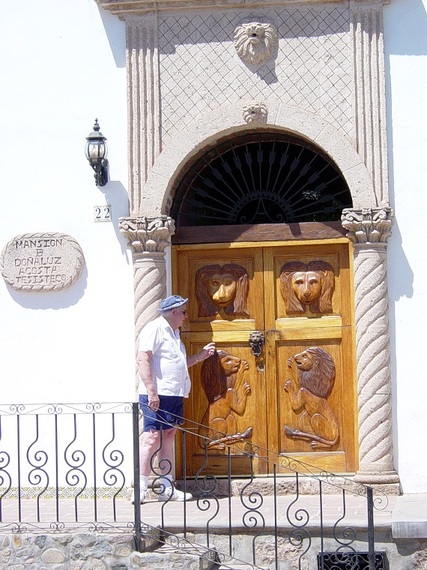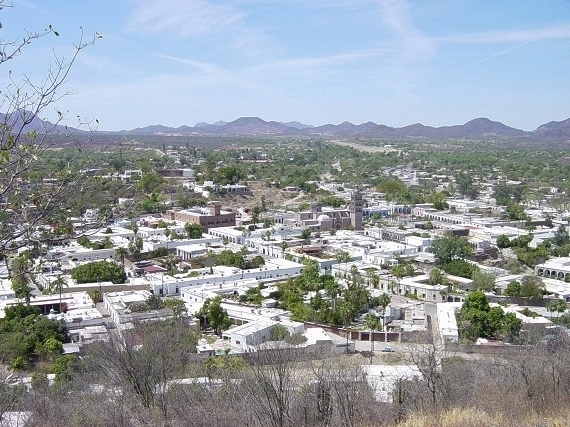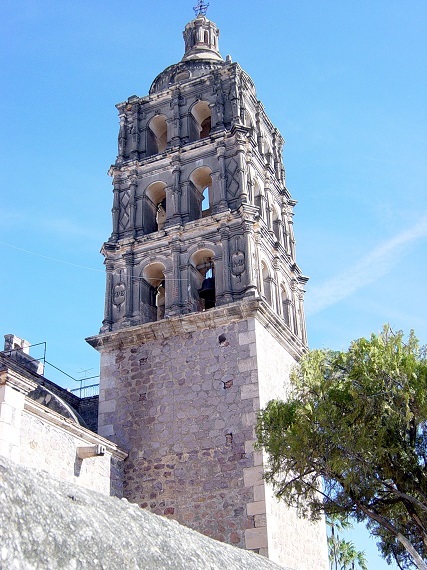Townsfolk claim the mysterious German writer who used the name B. Traven wrote his famous novel Treasure of the Sierra Madre in the village of Alamos out in western Mexico's Sonoran desert.
It's easy to see how this old Spanish mining town might have inspired a book about prospecting for gold in the nearby Sierras.
A stroll along Alamos' cobbled lanes, porticoed walkways and Andalusian courtyards takes you back to the 17th and 18th centuries, when this remote town was one of the richest spots on Earth. You half expect to see gold and silver barons in silk shirts, velvet breeches and knee-high leather boots strutting off to count the day's take. You can imagine ladies in hooped skirts and white petticoats heading to afternoon teas. Silver-plated carriages, it's said, once lined Alamos' narrow lanes like Rolls-Royces along Beverly Hills' Rodeo Drive
The dons and donas may be gone, but tourists can enjoy their legacies in 188 buildings around the city - everything from mansions and mills to the town jail - tagged as national historic monuments.
Nestled in the Sierra foothills, the city sprung up as a bedroom community for the fabulously wealthy aristocrats who ran the nearby mines. Their mansions were handed down from generation to generation, and until a few years ago were one of Mexico's best bargains, even after the cost of a facelift. For example, not too long ago an American expat - one of 300 or so now living in the city - snapped up an aging villa for $300,000, with plans to turn it into a hotel. In other, well-known colonial cities such as San Miguel de Allende, the same building could easily have topped a million dollars.
Centuries-old homes around this town of 13,000 are still said to be a good deal, but prices have been heading upward. In part, that's come from the "discovery" of Alamos by widely read publications.
The nearby mines gave up so much of the shiny stuff that the town had its own mint. From there, the riches were loaded on mules, which went plodding off to Mexico City on an extension of the Royal Highway built just for shipments from Alamos. The town also had its own silk factory - even gold and silver barons had to dress for success - the worms having been cultivated in white mulberry trees imported from Japan along with gardeners and silk weavers.
Keep walking, and you'll run across the home-turned-museum of Mexico's old-time movie queen Maria Felix, Alamos' most famous daughter. American stars Mary Astor and Carroll O'Connor once had homes there, too.
Besides drawing vacationers looking for a taste of colonial Mexico, Alamos attracts a good number of hunters (the area abounds with white doves) and is known as a mecca for bird-watchers (the hills are chock full of rufous-bellied chachalacas, blue-rumped parrotlets, russet-crowned motmots and 400 of their winged relatives).
Getting there: Check out a map and you'll see the Mexican state of Sonora just below Arizona. Now, look for a tiny speck 400 miles south of the border at the lower end of Sonora - literally at the end of the road. That's Alamos.
Whether you travel to Alamos by air to a regional airport or by bus or car, chances are it'll take you a long, long day or a couple of days to get there. But most visitors agree, the town is worth every minute of the trip.
Staying there: Alamos offers a dozen or so tourist-class hotels, inns and guest houses, mostly once the mansions of mining moguls (and now mostly owned by American and Canadian expats).
About B. Traven: That was the "pen name" of a German writer who came to Mexico in the 1920s. Beyond that, not much is known about him, not even his real name. Among his literary works were 12 novels, including some in which his main characters were German political activists who fled to Mexico in the 20s. He departed from that theme in his 1927 masterpiece, Treasure of the Sierra Madre.
Photos by Bob Schulman


